SURVIVAL IN THE SADDLE • PART 6
In the previous post we discussed some of the physics and dynamics of that beast we all know and love…The Motorcycle. Now we get to the fun part. Using what you learned when you’re out riding on those great motorcycle roads.
If you haven’t read the previous post, “CARVING UP THE CURVES • WHAT YOU NEED TO KNOW”, we strongly recommend that you read it first. The information in that post lays the groundwork for what we’re going to talk about today.
Road Riding And Road Racing Are Not The Same!
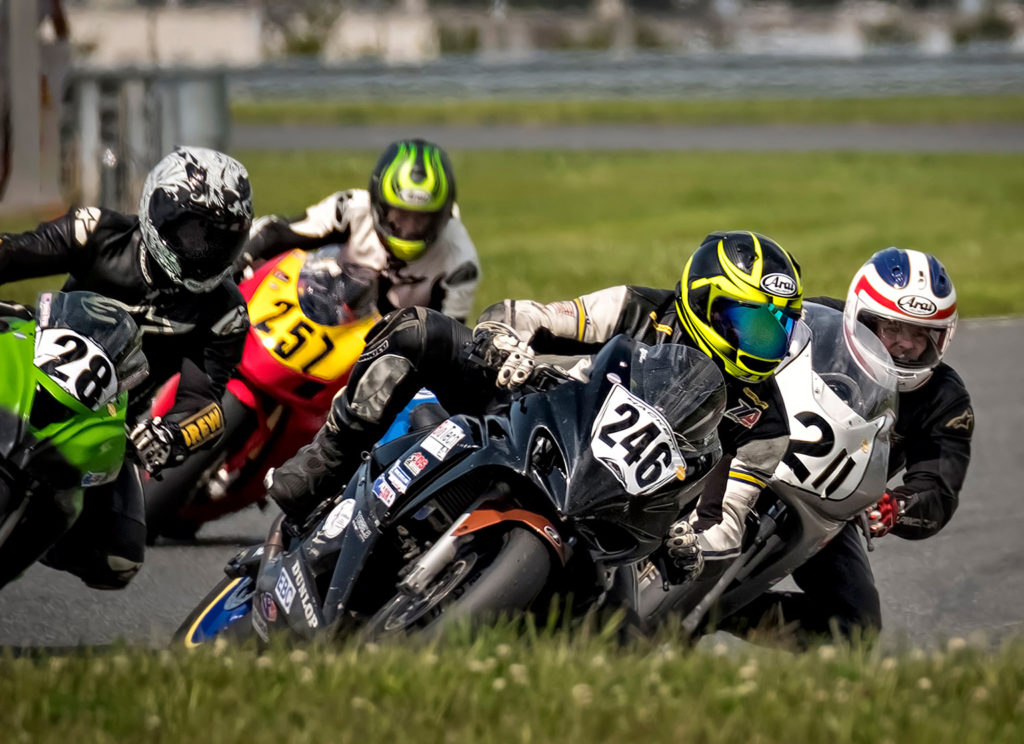
Some of the techniques used by professional motorcycle road racers have their place when you’re out on public roads. Many do not! When the two come into conflict we’re going to talk about riding in the real world.
Road racers do not have to contend with the hazards that road riders do. They zip around the track with no fear of oncoming traffic. They have an extraordinary, unobstructed view of the race course ahead of them. They have memorized every inch of the track. They know where all the upcoming curves lead and any imperfections in the tarmac that might exist.
There are no intersections where inattentive drivers might pull out into their path of travel. They’re not going to encounter oil spills, wet leaves, patches of black ice or deep, loose gravel on the pavement. There’s little chance of having a collision with a two ton moose. (Though I did once witness a flock of Canadian geese wreak havoc on track during a MotoAmerica event)
Road racers concern themselves with getting around the course as quickly as possible. Preferably quicker than the riders they’re competing against. Compared to riding on those great motorcycle roads in the real world it’s a relatively safe endeavor. Some of the techniques used by successful racers differ greatly from those employed by accomplished road riders.
Hitting Your Marks
The shortest distance between two points is a straight line. On the racetrack this is generally the fastest route as well. The diagram below shows the path a road racer will take through a S-curve on the track.
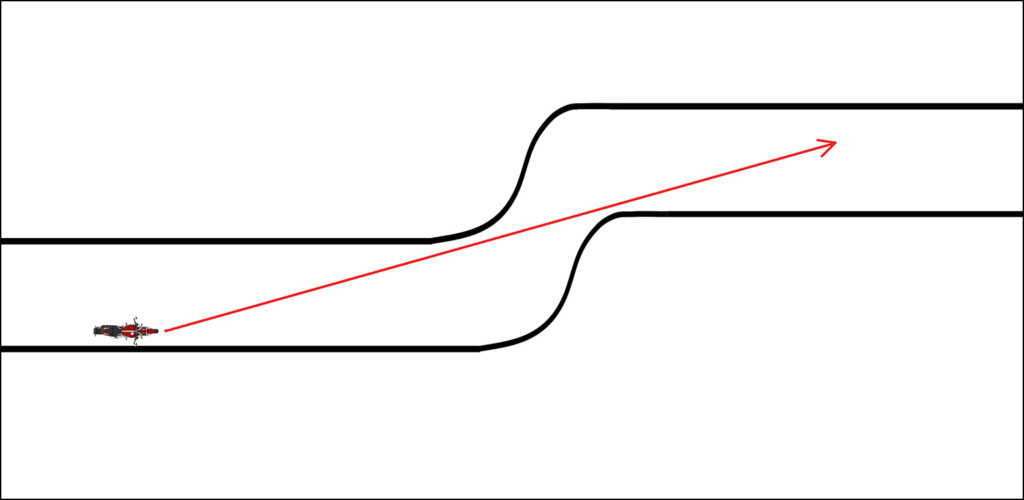
The racer is not sitting up tall in the saddle motoring through in an upright stance, of course. The racer will be leaning from one side to the other; first left, then right; knees to the ground. The limits of the motorcycle being tested in an extraordinary display of skill.
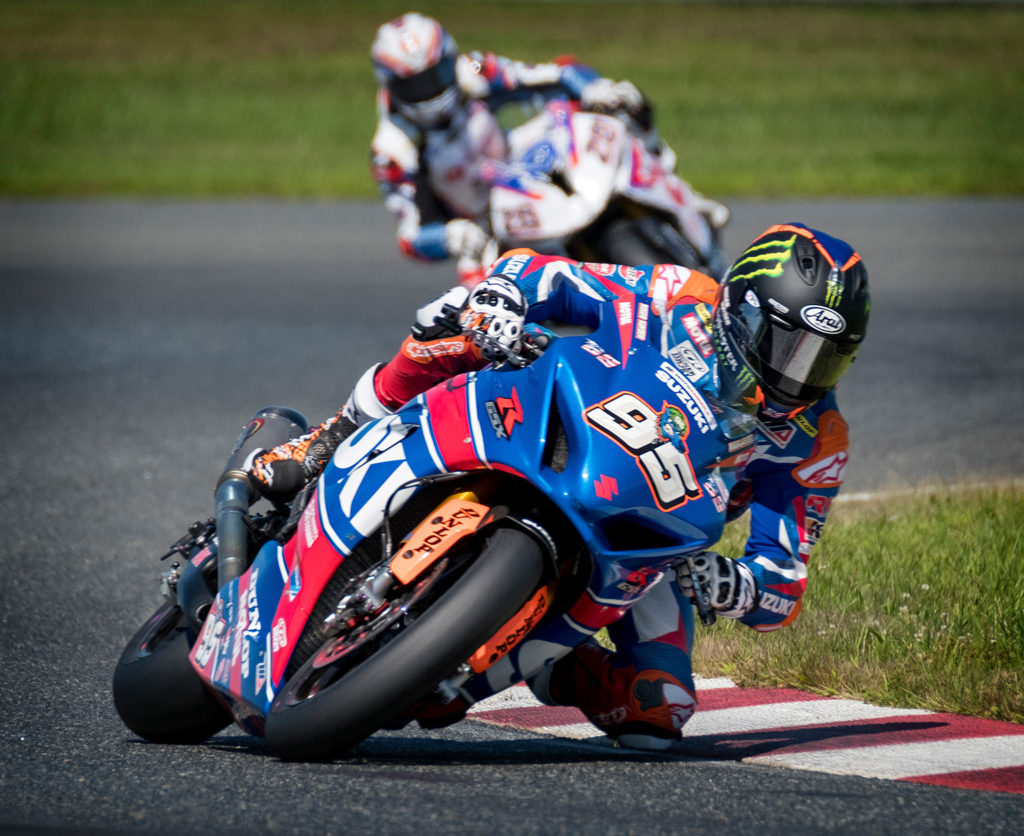
Out on those great motorcycle roads in public a different tactic needs to be utilized. The skilled road rider approaches the left-hander from a position in the right track. After executing the left turn the rider moves to the left track in preparation for the upcoming right hand bend. The right-hander is completed, the bike returns to upright and the rider continues safely down the road. The road rider’s path is illustrated below.
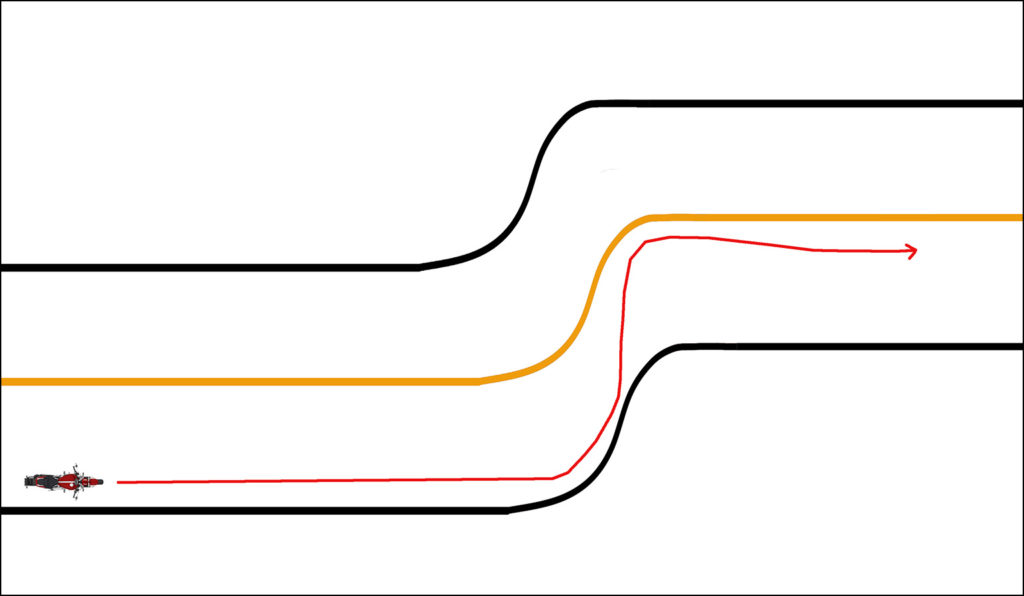
See And Be Seen
The difference between the road racer’s approach and the road rider’s can be summed up in one word. Visibility. The road racer’s visibility is unlimited. The entire track ahead is in plain view. No surprise hazards are going to suddenly materialize ahead. No oncoming traffic will be encountered.
We road riders wish that were true when we’re riding those great motorcycle roads in the real word. Sadly, that’s not the reality. We often have no idea what lies behind the next bend in the road and must do everything within our power to prevent a catastrophe.
Oncoming Traffic
One of the greatest hazards a motorcyclist faces when riding into a “blind” curve is oncoming traffic that might be coming your way. The sooner you see it, and the sooner they (hopefully) see you, the better. The way to give yourself the best possible advantage is to follow the track described above.
In the illustration below we’re looking at the scenario in a left hand turn. Compare the two different lines of sight depicted between the motorcycle and the automobile. When the motorcycle has taken a position in the right track its rider sees the oncoming traffic sooner. The oncoming traffic has a better chance of seeing the motorcycle sooner.
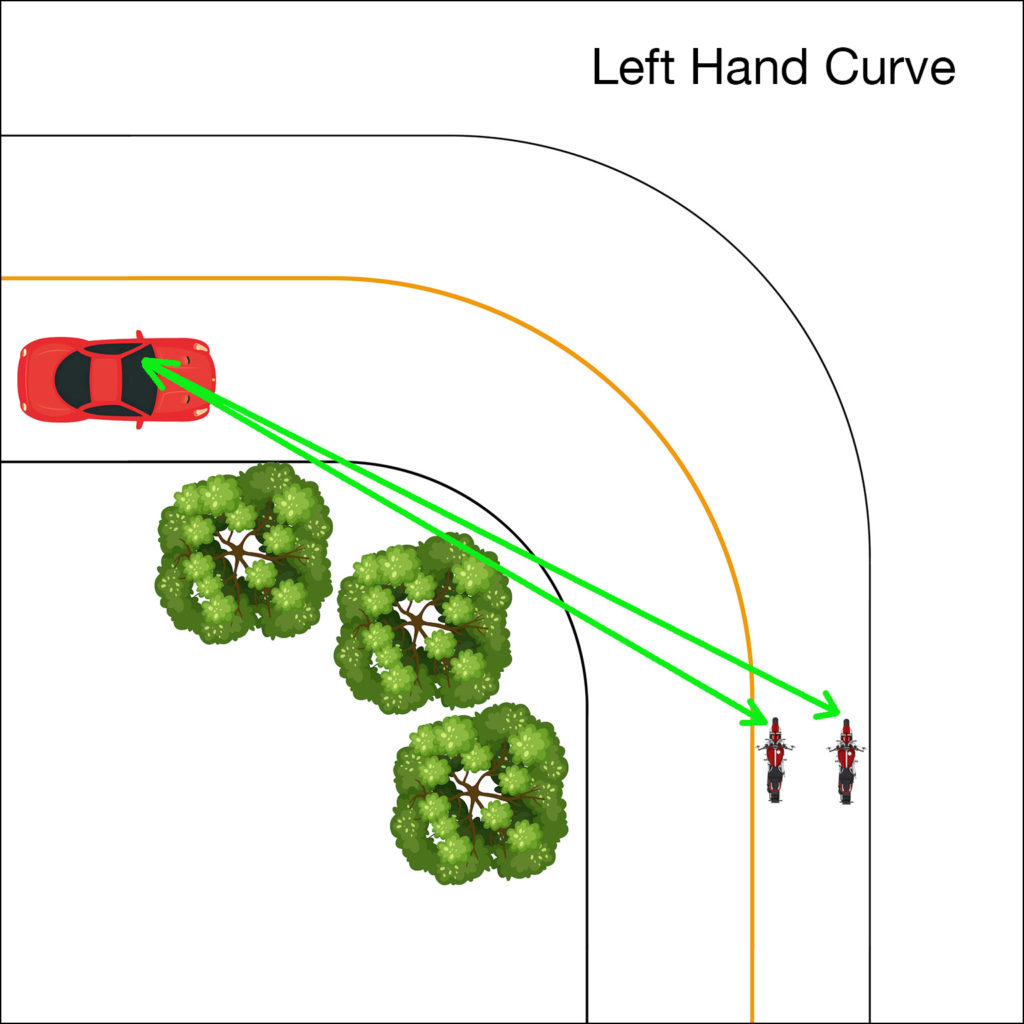
The same thing applies when you’re negotiating a right-hander as illustrated below. This time you set yourself up in the left track as you approach the curve. Once again, both the motorcyclist and the automobile are given the most amount of time to see each other approaching.
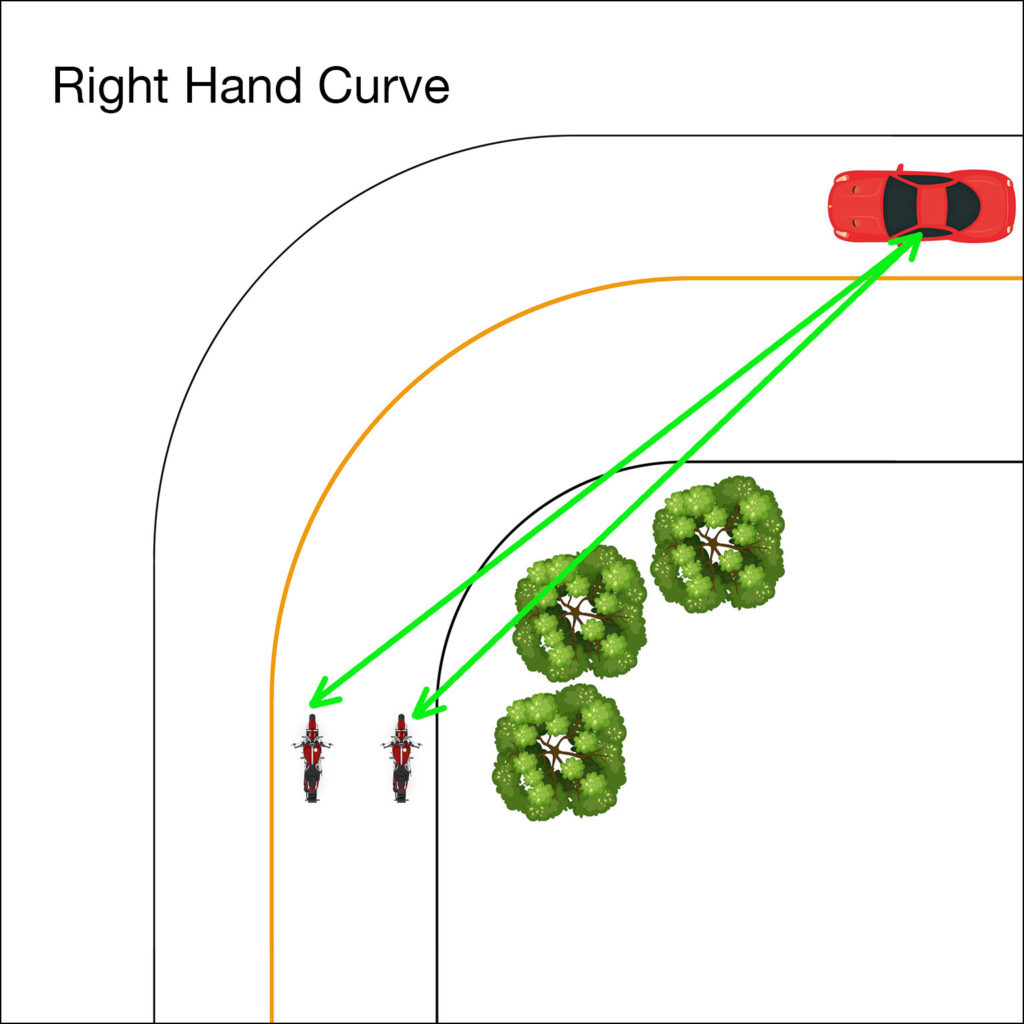
Unfounded Fears
Some motorcyclists will go along with this tactic when negotiating left-handers but will refuse to take the outside track in right-handers. Their arguments usually revolve around concerns that riding too close to the center line exposes them to an oncoming car that might drift into their lane.
This argument is invalid on multiple counts. The first one we’ve already touched upon. By taking the outside track you’ve given yourself and the oncoming car the best possible chance, and the most amount of time, to see each other and react.
Secondly: entering the right-hander from the left track allows you to lean the machine into the turn later. If you encounter a hazard as you round the turn your bike will be in a more upright orientation and you’ll be in a better position, traction wise and visibility wise, to execute any emergency avoidance maneuvers.
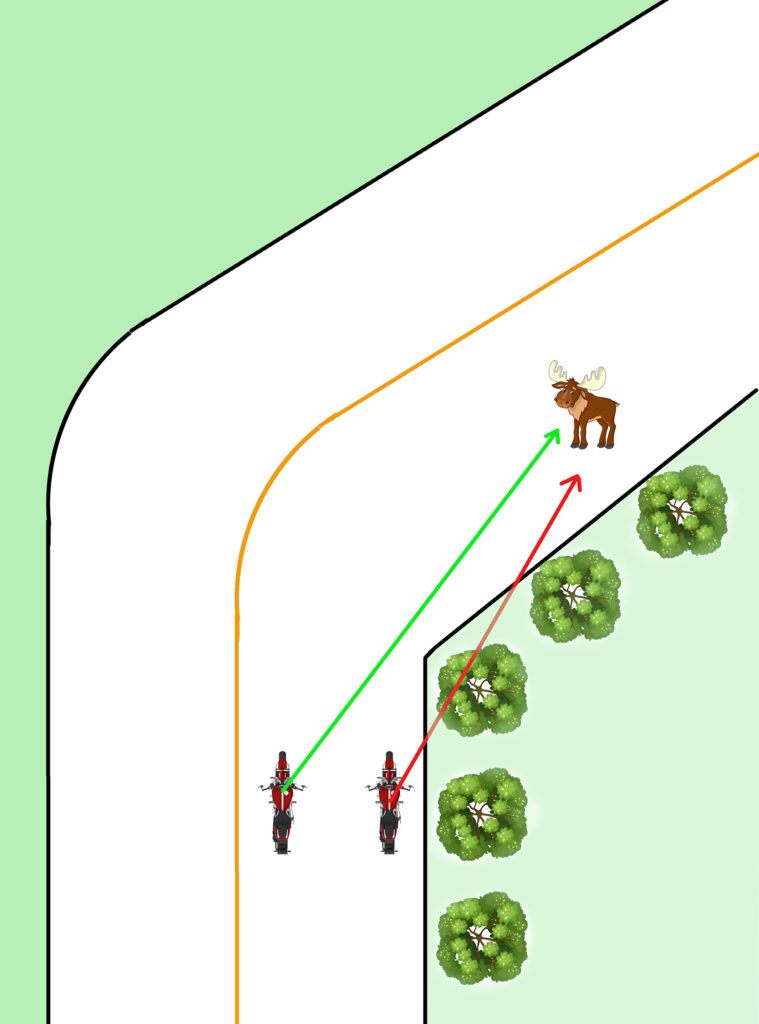
Finally: and this is one of the most fundamental elements of motorcycle riding. The motorcycle will go to the point where you are looking. When you take the wide entry line more of the road ahead has been revealed to you. Your options of where to point the bike are far greater than if you rounded that right-hander close to the right side of the road. You simply can’t see any “escape routes” with that diminished view from that smaller patch of real estate.
Hit The Brakes…Go Faster
When I’m out riding those great motorcycle roads I use what I refer to as my B.O.L.T. method of negotiating those wonderful twisty, curvy routes. B.O.L.T. is my acronym for Brake-Observe-Lean-Throttle. Everybody slows down as they approach an unfamiliar curve. Most riders are doing it improperly.
It is proper to decelerate with your bike still vertical as you approach the unfamiliar curve. Being upright gives you the best possible chance of executing an emergency stop or swerve if needed. The majority of riders simply roll off the throttle and let the bike slow down with its natural engine decompression. Some so-called experts will tell you they are “engine braking”. WRONG!
When you roll off the throttle braking is applied to the rear wheel only. The motorcycle “squats” and you lose traction in the front tire. Remember that all important contact patch we talked about in the previous post? Well, rolling off the throttle, and shifting weight to the rear of the bike, pretty much destroys all the traction you had at the front tire. And guess what? It’s the front tire that steers the bike. It’s the front tire that does 90% of the work in stopping your bike.
If you want to sweep through those turns faster and more confidently, use your front brake to slow down before the turn. Keep that front tire contact patch pressed firmly into the road surface.
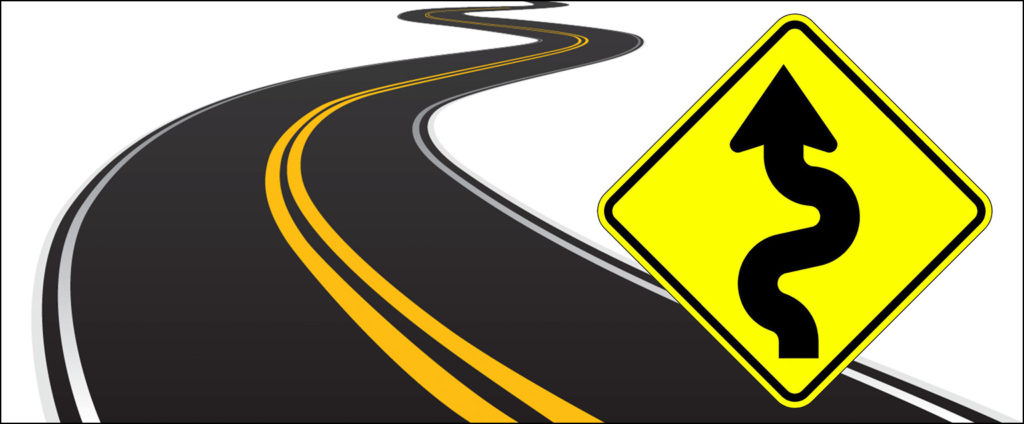
We Know Who You Are
By a show of hands: Who wants to take those sweepers a little bit faster…a little bit more aggressively? We all do. It’s part of the thrill of piloting a motorcycle. The best way to get quicker is to use your front brake and not engine decompression to slow down before the turn.
It’s very easy to spot the offenders; especially those American V-Twins and crotch rockets with aftermarket (loud) pipes. We hear you backing off the throttle but we don’t see your brake light come on. We know what you’re doing. I’ve actually heard someone say that they don’t use their brakes going into a turn because they don’t want the rider behind them to think they’re scared! Use your front brake and leave them in your dust. There is nothing left for them to say after that.
Back To B.O.L.T.
The next part of the B.O.L.T. sequence is “Observe”. Before you commit yourself to diving into that corner at warp speed give a good look around. Scan the surface of the road for sand, loose gravel, oil spills…anything that could spell trouble to a biker. Again…you’ll have a much better view of what’s ahead if you’re entering the corner from the wide track.
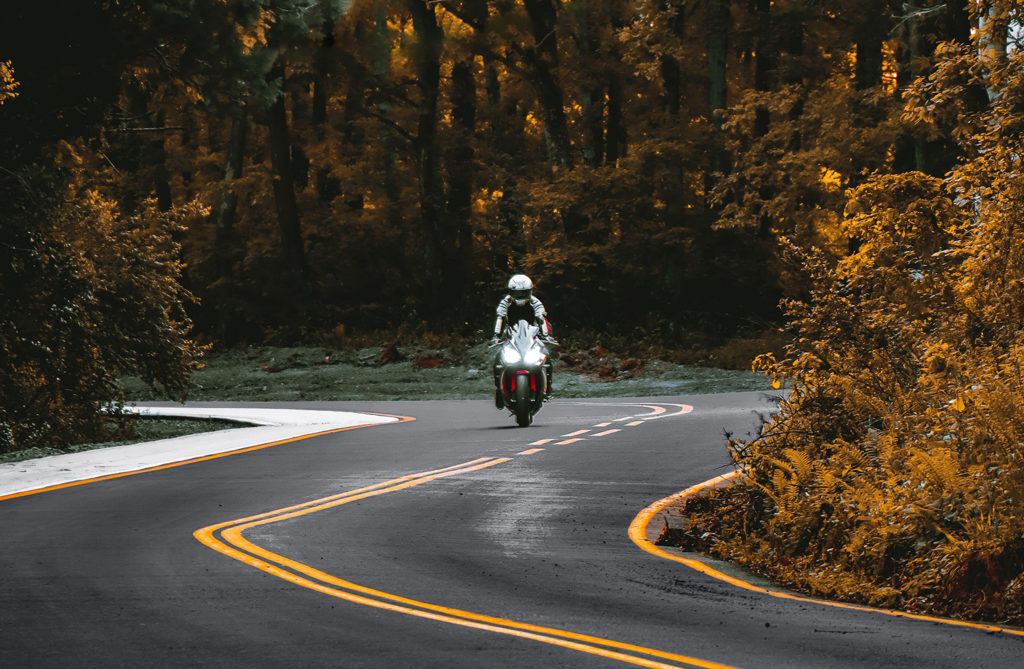
Exiting a right-hander properly from the wide track
When you’re ready to commit to the turn swivel your entire head in the direction that you intend to go. The bike is going to go where you’re looking. Make sure you’re really looking in the direction you intend to go.
Use The L Word…Lean
If you’ve done everything perfect up to this point you have slowed the bike down while maintaining front wheel grip. You have positioned yourself in the outside track for maximum view of the road ahead. You have your head turned and pointed in the direction you intend to go. It’s time to lean into the turn.
You can do this in a number of ways or in a combination of ways. Push down on the inside footpeg. Shift your weight in the saddle. The most efficient move is to apply pressure to the handlebars. Apply enough pressure to get the bike leaned over and headed where you want to go. Then ease up on the pressure to hold a steady line of travel.
T is For Throttle
Once you’re happy with the path the bike is taking, and the look of the pavement ahead, it’s time to get on the gas. Roll on the throttle. Accelerate through and out of the turn. Wheeeee! This is what it’s all about, isn’t it?
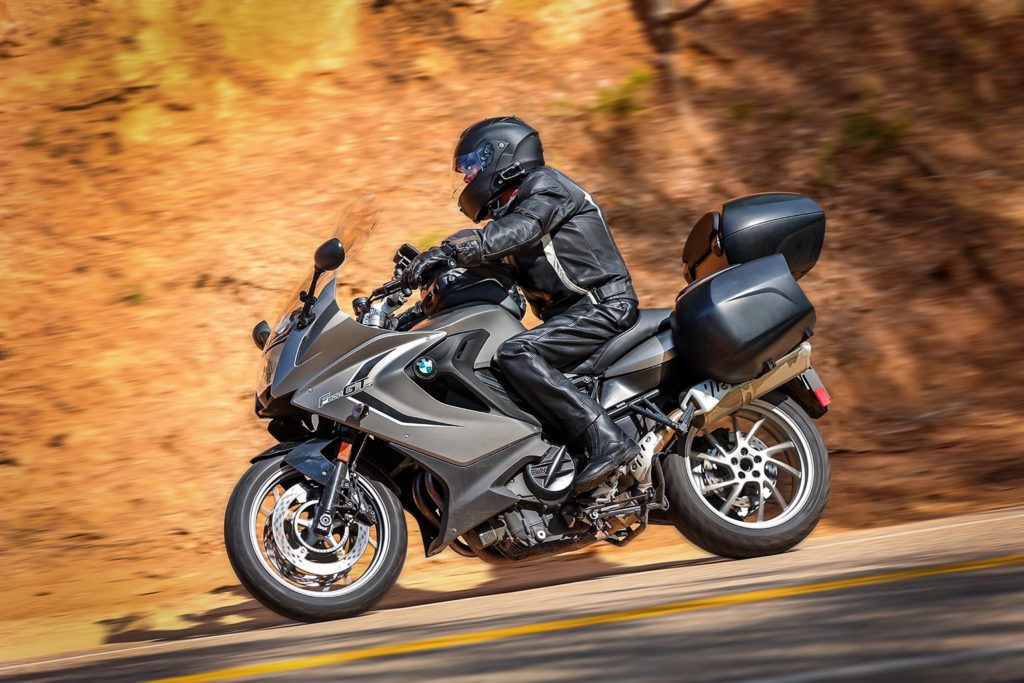
I’ve yet to meet a motorcyclist who doesn’t love ripping it up on those great motorcycle roads laced with sweeping turns, tight curves and gnarly switchbacks. Those that don’t are only lacking one thing. Confidence. Confidence in the machine. Confidence in the physics. Confidence in themselves as riders.
As stated in the previous post the motorcycle wants to remain upright. It’s designed to do so. The dynamics of a two-wheeled vehicle insures that it will behave as you ask it to. That just leaves the rider’s confidence in question. The way to build skills and confidence is through practice and experience.
Hit The Great Motorcycle Roads
It just took you a few minutes to read about how to really carve up those curves. Out in the real world you’ll be exercising those B.O.L.T. maneuvers in seconds…fractions of seconds even. After a little bit of practice the moves become instinctive. This is what you want. Think the process through the first few times and watch your riding improve dramatically. By the time they become second nature to you you’ll notice something else. Your enjoyment of the ride has increased too!
We hope you have enjoyed these posts on Carving Up The Curves. More importantly, we hope you have taken something away that makes you a better rider and adds to the enjoyment of this two-wheeled pursuit of ours. As always we welcome your comments below. Be sure to subscribe to Roadcraft USA to receive notifications when new features are published.
Click Here to view an interactive visual index page where you can quickly browse through all of the great features that are published on the Roadcraft USA blog.

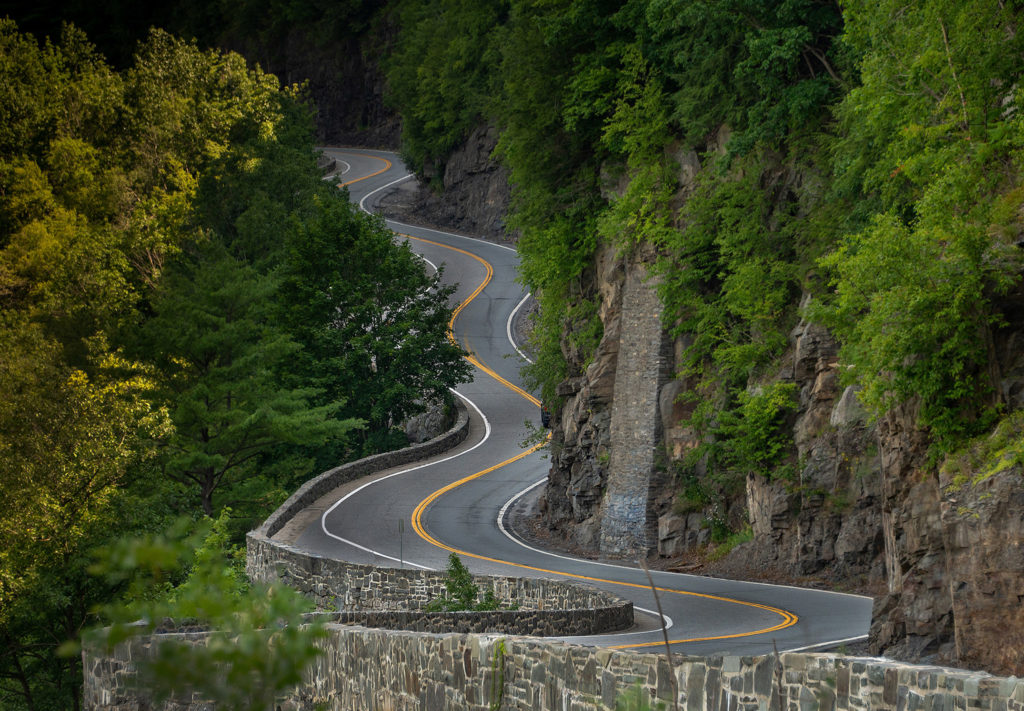
Do you consider or practice feather braking in a curve? It’s saved my bacon when I enter it too fast.
Do you consider or practice feather braking in a curve? It’s saved my bacon when I enter it too fast.